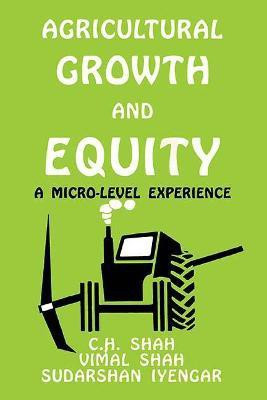Agricultural Growth and Equity First Edition(English, Hardcover, Shah C.H.)
Quick Overview
Product Price Comparison
Rapid development of agriculture has been a key objective of India?s planning efforts since 1950. Green revolution, ushered in the early 1960s by adoption of policies to accelerate the diffusion of technological change, has helped the country to achieve a degree of self-sufficiency in the production of at least the staple foodgrains. Critics of the green revolution have been concerned about its uneven spread and the extent to which it bypasses the poor and aggravates inequalities in living conditions. It is not possible to provide a conclusive answer to their doubts on the basis of cross- sectional studies. A longitudinal study can provide a rich data base for understanding the processes and outcomes of spread of technological change. The present book reports on a quasi-longitudinal study based on an in-depth survey in the same 28 villages of Matar Taluka of Kheda District in Gujarat State at three points of time, 1929-30, 1965-66 and 1974-75. The last two studies undertaken by the two senior authors of this book have built on the celebrated study of the well-known Gandhian economist, Dr. J.C. Kumarappa. Results of the second resurvey inspire optimism about the spread effects of green revolution on the level of living of different groups of population. Matar experience suggests that a substantial change in technology is essential if its benefits are to spread and percolate to the weaker sections in the face of various institutional barriers. ┬Ā About the Author DR. C.H. SHAH (b. 1920), an eminent agricultural economist, was Professor of Agricultural Economics in the Department of Economics of University of Bombay at the time of his retirement in 1980. An Hon. Secretary of the Indian Society of Agricultural Economics for many years, he was President of its Annual Conference in 1979 and was connected with the editing of its Journal for several years. He has published a large number of papers and books on varied aspects of Indian agriculture, rural living standards, and the influence of people?s preferences on their nutritional status. After retirement he has settled down in Cambridge, Mass., U.S.A.


